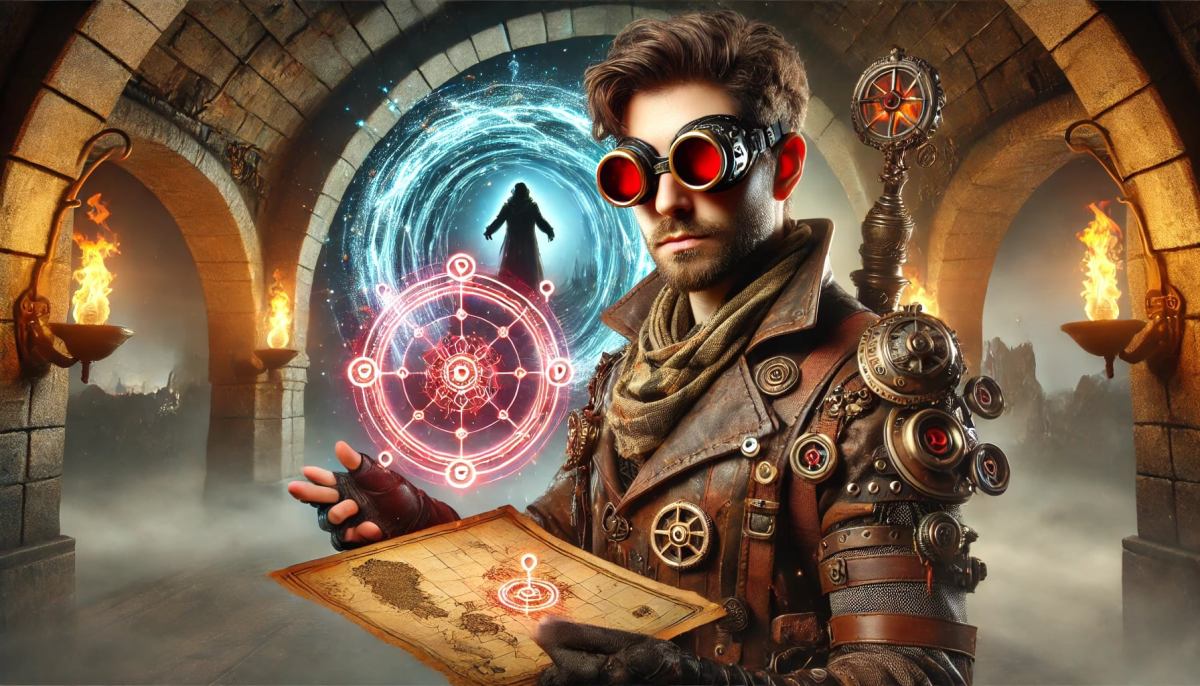SMOOSH JUICE
Making Madness Fun: Sanity, Corruption, and Consequence in TTRPGs


Making Madness Fun: Sanity, Corruption, and Consequence in TTRPGs
Embracing the Eldritch in Aether Skies Without Breaking the Game
In Aether Skies, madness isn’t a punishment. It’s a storyline. A consequence. A transformation. The deeper your players explore cursed ruins, commune with unknown entities, or push Aether too far, the more their reality warps—and the more interesting your game becomes.
But too often in TTRPGs, “madness” is handled as a blunt stick: roll on a table, lose control, act quirky until the scene ends. In a world of cosmic horror, fractured morality, and living skies, we can do better. Here’s how to turn madness, corruption, and altered perception into dynamic, engaging tools for your players—and fuel for unforgettable campaigns.
1. Madness as Transformation, Not Loss
First, shift the paradigm. Don’t treat madness as a debility—treat it as a story catalyst.
🔹 What Does That Mean?
-
It’s not “you’re insane now,” it’s “you’ve seen something you weren’t supposed to, and now you see the world differently.”
-
Madness should unlock truths, open new paths, and create personal consequences—not just quirky behavior.
-
It doesn’t take away agency. It complicates it.
2. Custom Sanity & Corruption Mechanics
In Aether Skies, the veil between reality and the unknowable is thin. Here’s a lightweight system to track how close a character is to slipping through.
The Sanity Meter (0–10 Scale)
-
Start at 10.
-
Lose Sanity when exposed to:
-
Eldritch entities
-
Prolonged time in The Curtain
-
Reading forbidden tomes or glyphs
-
Pushing Aether beyond its limit
-
-
Regain Sanity through:
-
Deep rest, rituals, grounding bonds
-
Therapy (magical or mundane)
-
Facing a fear and overcoming it
-
At certain thresholds, new effects unlock:
| Sanity Score | Effects |
|---|---|
| 8–10 | Stable. May have unsettling dreams or visions. |
| 5–7 | Subtle hallucinations, sensory distortions. Gain an Insight Die. |
| 2–4 | Full hallucinations. Choose a new Flaw or Secret. Gain limited eldritch abilities. |
| 0–1 | Full Break. Roll a Revelation or become a Thrall. The GM offers a dark pact or personality shift. |
The Insight Die (d6)
When a player hits 5 or below, they gain an Insight Die—a personal d6 they can roll once per session to:
-
Gain insight into an unsolvable mystery
-
Detect hidden eldritch forces
-
Predict a danger moments before it hits
However, rolling a 6 triggers a hallucination or truth so intense that the player must choose between acting on it or resisting (at a cost).
3. Roleplay Prompts for Character-Driven Madness
Encourage players to own their descent. Give them prompts rather than penalties.
Prompts by Theme:
-
Paranoia: “What do you see in your crewmate’s eyes that makes you distrust them now?”
-
Visions: “You dream of a place that doesn’t exist—but you know it’s under Haven. Describe it.”
-
Obsession: “You’ve started keeping one of the Aether Parasite shells. Why can’t you throw it away?”
-
Dissociation: “Sometimes you float above your body. What are you doing when it happens the most?”
These can be secret GM messages or open questions at the table. Encourage internal tension, not chaos.
4. Corruption as Currency
Corruption is the physical or metaphysical consequence of madness—where the body starts reflecting the mind’s unraveling.
🌙 Corruption Traits Might Include:
-
Veins glowing faintly with Aether light
-
Dreaming in languages that don’t exist
-
Skin that shimmers like stone, flickers like fire, or drips saltwater
-
Emotions bleeding into surroundings—rage curdles the air, sorrow dims the lights
Players can embrace corruption for mechanical power, but it comes with a cost:
-
Extra spell slots… but they cause feedback.
-
Boosted perception… but now you see too much.
-
Bonus to persuasion… but people see something alien in your smile.
Use corruption as a temptation system. Offer small boons in exchange for narrative mutation. Keep track, and let players choose the moment it becomes permanent.
5. The Slow Burn: Madness Arcs, Not Madness Scenes
Make a character’s unraveling an arc, not a moment. Build it like a subplot.
Three-Act Structure for a Madness Arc:
Act I: Exposure – They see something they can’t unsee. They’re shaken. Maybe it’s a vision or an eldritch whisper.
Act II: Obsession – They begin researching, pushing boundaries. Hallucinations begin. They pull away from the crew.
Act III: Choice – Will they give in? Fight it? Transcend it? This is the moment they gain a new flaw, a secret, or even a strange gift.
Bonus: Let players set the tone of their arc up front. Are they afraid? Curious? Seeking truth? This keeps it collaborative.
6. Madness in the Party: Keeping It Fun for Everyone
-
Consent & Collaboration First: Always check in. Madness should never override player comfort or safety.
-
No Solo Spotlights Forever: Don’t isolate characters unless the player wants that moment. Always tie madness back to group consequences or discoveries.
-
Give Equal Time to Other Arcs: If one character is unraveling, let another be rising in faith or strength. Counterbalance horror with hope.
Conclusion: Sanity is a Storytelling Tool
In Aether Skies, madness isn’t the end. It’s a doorway. To truth. To power. To horror.
The best horror doesn’t scream—it whispers. It slips into your dreams. It reminds you that you wanted this.
Make madness a journey, not a punishment. Let it shape characters, bind them tighter, or tear them apart.
Because when the sky tears and the old songs return, only the mad will understand the words.
Thanks for reading. Until Next Time, Stay Nerdy!!
